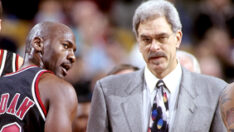The new bottom line: Cultivating relationships for high-performance
The current business landscape is increasingly volatile and unpredictable. To stay ahead of the competition, more emphasis needs to be placed on creating and, importantly, maintaining high-performance environments, argues Geoff Clarke, chief operating officer of Mediabrands.
The current business landscape is increasingly volatile and unpredictable. Leaders, now more than ever, need to be agile, adaptable, and able to pivot in response to an ever-growing list of challenges. To stay ahead of the competition, more emphasis needs to be placed on creating and, importantly, maintaining high-performance environments.
High-performance environment benefits are numerous – elevated employee engagement, innovative output, a culture of continuous improvement, selfless pursuit of success and an environment that celebrates individuality while nurturing the collective equally.
Phil Jackson, who is arguably regarded as one of the greatest coaches of all time, head coach of the Chicago Bulls from 1989 to 1998, leading them to six NBA championships, said: “The strength of the team is each individual member. The strength of each member is the team.” 

